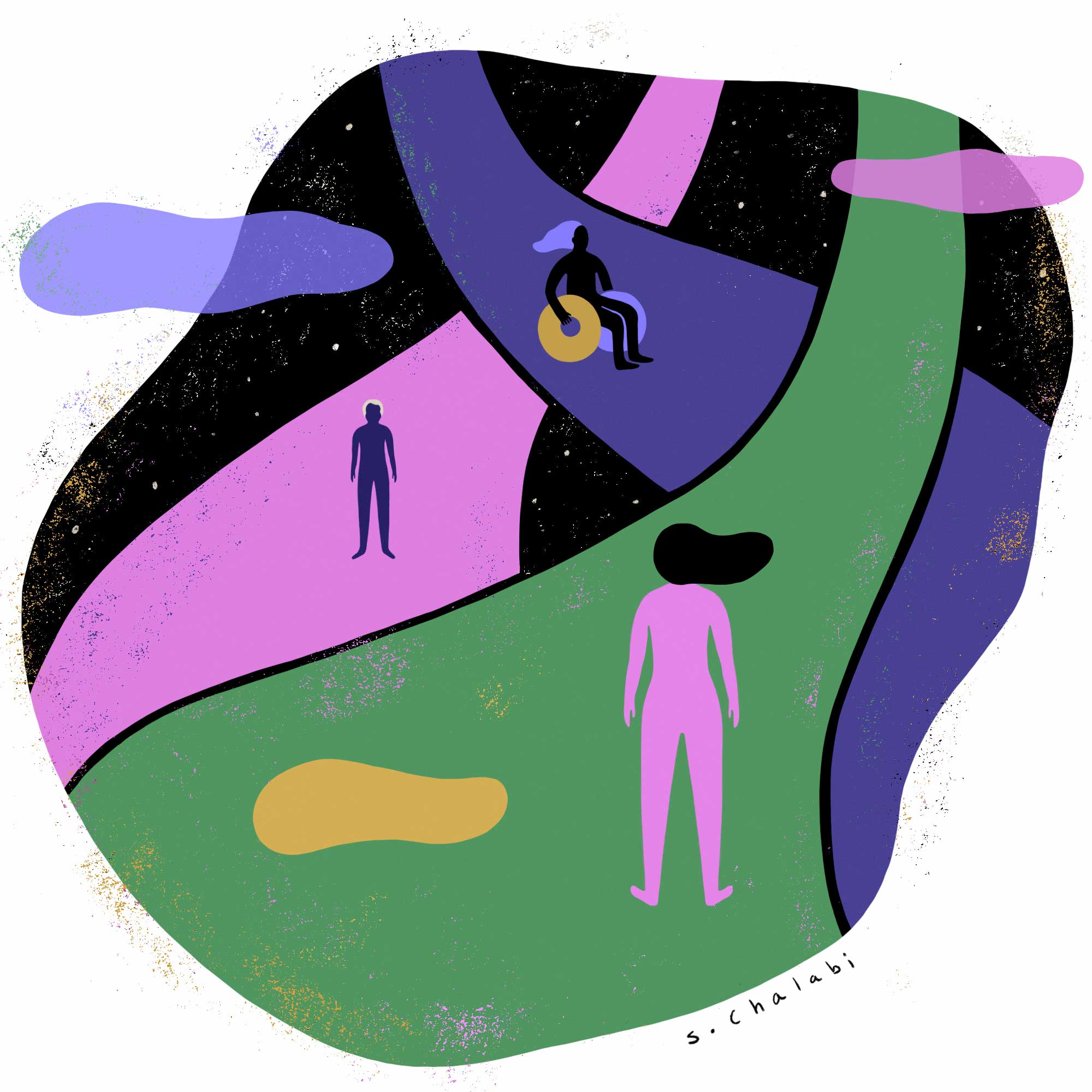Dark Study on new protocols for applying
Dark Study is an experimental program centered on art. Digitally rooted and virtual-first, it is a refuge for students dealing with the untenability of higher education. Its directors are Nora Khan, Caitlin Cherry, and Nicole Maloof.
Community-building in schools is often talked about as if the process begins on the first day of school—a group of students happens to find itself in the same space, at the same time. However, the community formed in the classroom is engineered long before the group gathers; its shape, the conversations it will likely have, is rooted in the application form. An application form is a subtle type of gatekeeping at all higher education institutions. If a school truly wants to give opportunities to those who have been locked or forced out of higher education, then the usual signs of access and training embedded in the application must be reassessed. Using the same old “natural” markers of “success” can only reproduce the hostile conditions that exist in society at large, undermining any attempts at creating an inclusive community before the first day arrives.
The standard application form’s opening questions are so ubiquitous that they can seem unremarkable: where you’re from; where you went to high school, and if it’s to graduate-level education, where you went to college; your race and ethnicity; the prizes, awards, and fellowships you’ve won. Like the classroom, like the university, the application form slyly embeds inequity before you enter its space. The form asks you to produce yourself as a kind of person who can slot neatly into a specific system of knowledge. There’s an institutional latticework you fit in by listing your past institutional affiliations. The jury imagines you in their space by checking how other boards, panels, and reviewers have valued you and determined your worth. They check that you have critical thinking skills to ensure you can problematize without being too difficult (the institutions have, after all, let you graduate). The application asks you to show your talent and creativity in legible form. You, we, upload, we link to, we narrate in words; we give clever anecdotes, we describe our potential. We argue for the content of our minds.
An applicant who wants to be in true study should be able to tell the story of who they are, their peculiar modes of navigation, and how they see the world. They should make themselves legible in the language, form, and style they choose. We at Dark Study propose an application that makes space for digressive, untidy stories of access, but also exclusion, or the psychological impact of being the only one of a kind in an intellectually, economically, or otherwise homogeneous space. There are other kinds of knowledge an applicant has absorbed, from their family, from their life experiences, from spaces outside of school. In evaluation, we will ignore information about past schooling to make space for those who have not accessed formal or prestige schooling. We invite applicants to describe their first job, and to reflect on the opportunities they’ve accessed or been denied, their life journey and their struggles. While colleges may ask for similar stories, their admissions committees often are trying to identify students who, in spite of their “messy” backgrounds, will go on to win prestigious awards. But an elite education does not wash away the trauma of a difficult life story. And there is a space of artmaking beyond awards and accolades. At Dark Study we are seeking people whose social experience and conceptual interests merge to form a rich art practice. We most want to see how their relationship to society informs the art that they make.
Privileging written communication is another issue. Most applications, including art school applications, favor the written essay over other modes of communication. Even talented applicants with great ideas may have a difficult time conforming to these expectations, if, for instance, they are dyslexic. Often, institutions interpret subpar writing as an indication of a weak candidate. This bias speaks to a failure of imagination, a failure to account for all the ways one may communicate. Dark Study invites potential students to submit their answers in traditional written form, but also in video or audio response. They’re asked to choose any form best suited to their methods of observation, analysis, and synthesis.
We further feel, as an interdisciplinary program, that our application should reflect all the ways to gather and give knowledge that are not Western colonial. As we embark on our first year, we aim to actively identify and tackle the various expressions of oppression and colonialism that exist in most all aspects of education. These same elements may exist in our own program, and will take time to identify and excise. While we don’t have all the answers yet, with time we hope to develop strategies that move our pedagogy, protocols, and structures away from the past.
We understand that submissions are only an approximation of who applicants are as full, complex people. As we’ve experienced in our own lives as artists and writers, there are manifold ways of pursuing inquiry and investigation, across genres, styles, and fields of knowledge. To begin reinventing the application process not only requires concrete, formal changes. Those doing the assessment must enact continual self-criticality, putting in the messy, painful work to unlearn. We commit to conscious reassessment of our own blind spots, to question our tastes, judgments, and biases, and call for that same labor across educational spaces.

This essay is part of CREATIVE FUTURES, a series of provocations by thinkers across the arts, documentary, and journalism on how to reimagine their sectors.